On the Road is a weekday feature spotlighting reader photo submissions.
From the exotic to the familiar, whether you’re traveling or in your own backyard, we would love to see the world through your eyes.
It’s Albatrossity Monday! We’ll have a special birds of spring OTR from Albatrossity tomorrow, and then we finish out the week with ema, Elma, and Dextrous.
By the end of the week, we will have published 985 OTR posts in the three years that I have been shepherding OTR. That’s a lot! If you’ve been thinking about submitting something to On the Road, this would be a great time to do it.
Albatrossity
This is the third batch of photos from day one in Serengeti National Park, so I plan to give you all a break next week and post some pics of springtime migrants and locals back here in Flyover Country. We’ll return to Africa for day 2 of Serengeti critters after that. I can’t yet tell you how many OTR posts (with 10 photos each) that will be, but I can promise that there will be pics of another species of jackal!
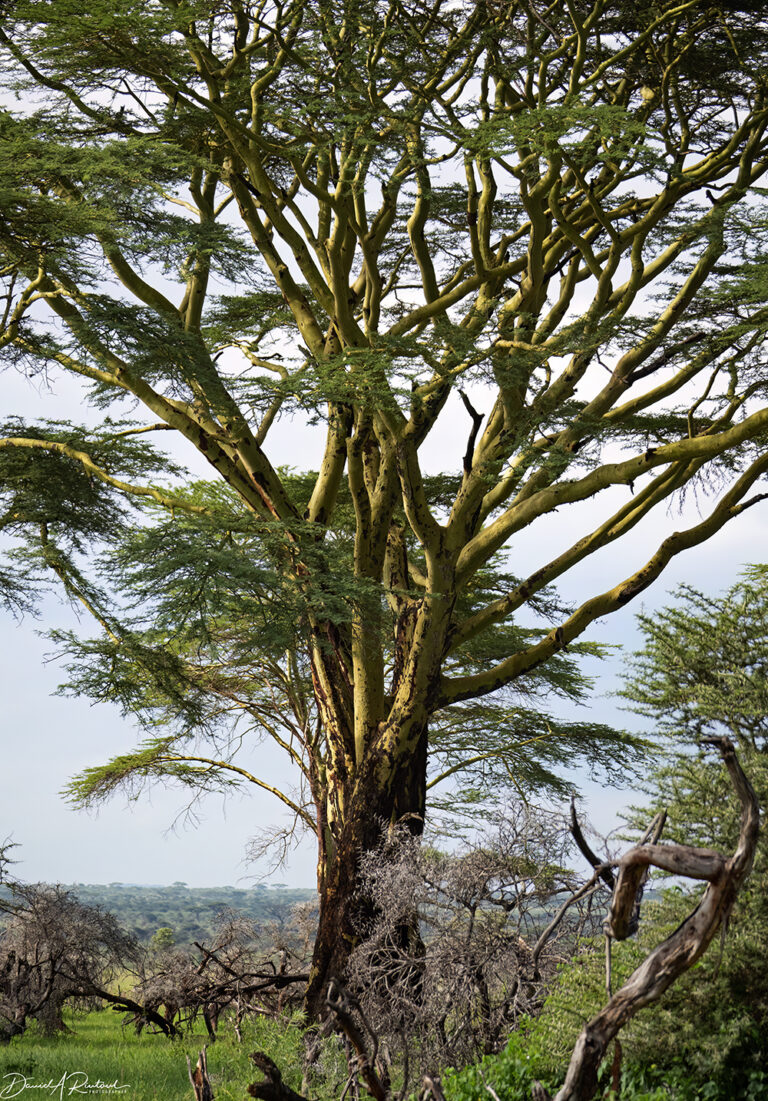
We’ll start with an iconic east African species, the Fever Tree (Acacia xanthophloea). The specific epithet means “yellow bark”, which is quite visible in this picture. The colloquial name comes from the observation that folks in proximity to a grove of these trees were much more likely to get malaria, and at the time the cause of the malarial fever was attributed to the trees themselves. Now we know that mosquitoes, which also favor the low swampy areas where these trees grow, transmit the malarial parasite that causes disease and fever. But the name persists! Click here for larger image.
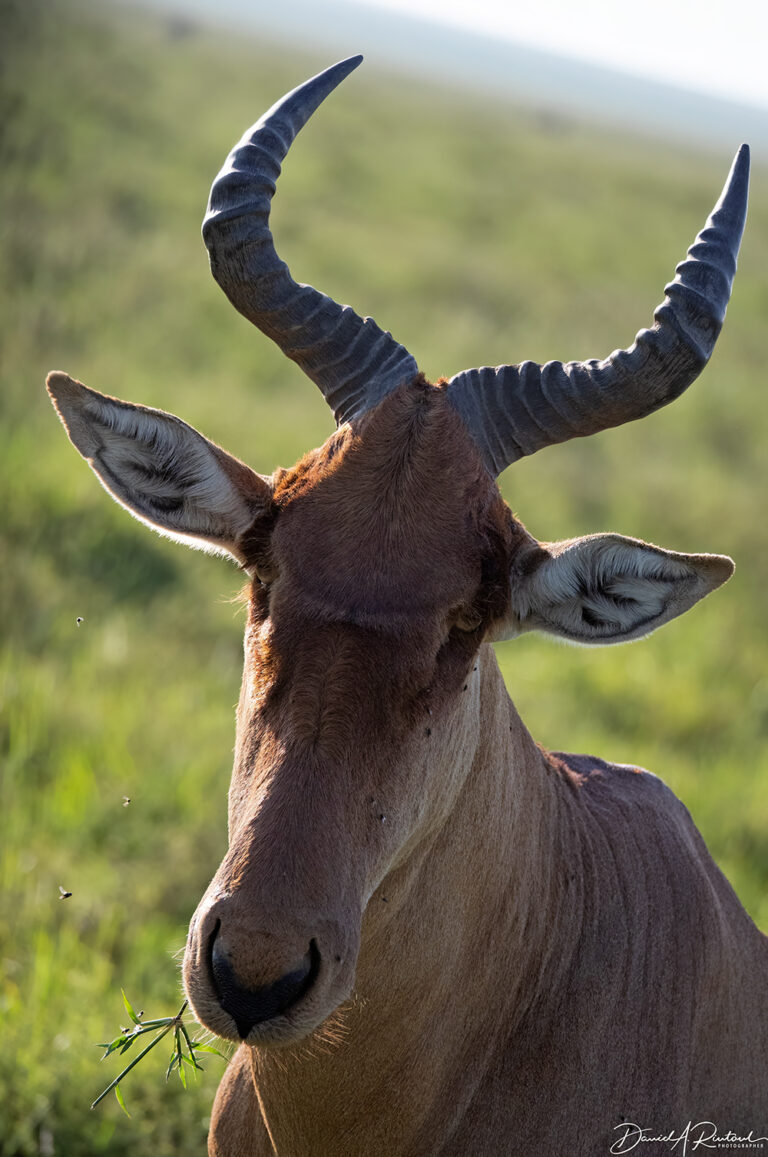
Those swampy areas also are good for growing grass, which attracts many species of grazers, one of which is the Hartebeest (aka Kongoni, Alcelaphus buselaphus). This is a large and sturdy antelope (the name translates as “tough ox”), with unique horns. Their populations have suffered from competition for food caused by expansion of cattle grazing, and they are also often hunted, since they are large and fairly sedentary. Despite their derpy look, they are a striking and beautiful beast. Click here for larger image.
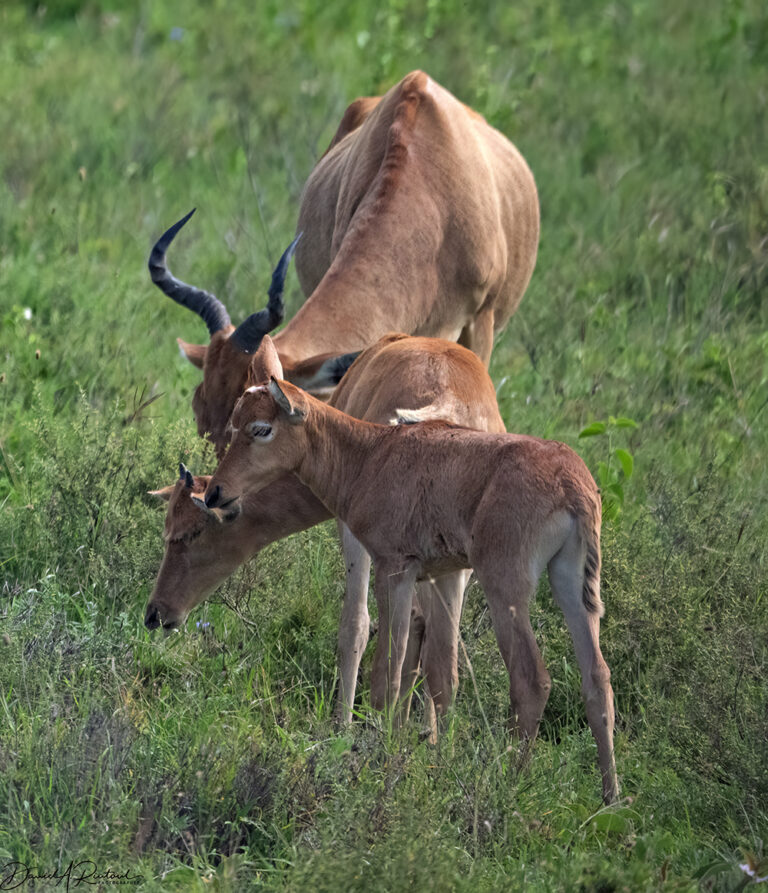
Hartebeests have a somewhat unusual life history, at least compared to other antelopes. In this image you can see a young calf, an older calf, and an adult that is probably the mother of both of those. Adult females are often accompanied by two or even three youngsters of various ages. Female calves can remain with their mothers for up to three years, apparently. Click here for larger image.
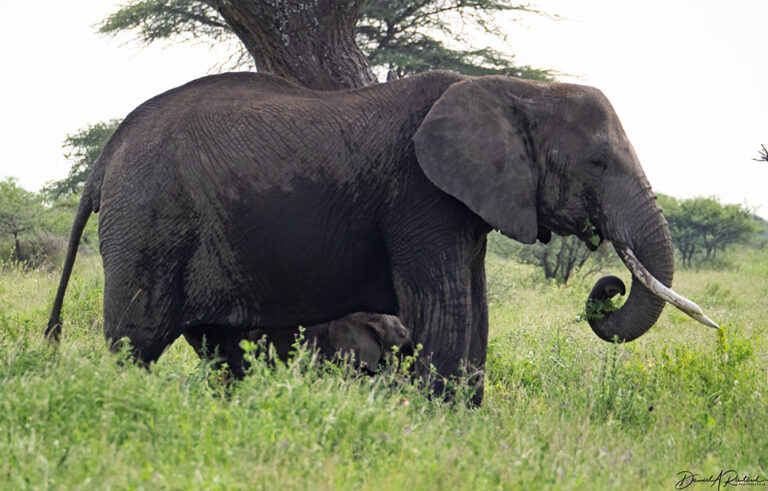
On the other hand, baby African Elephants (Loxodonta africana) spend even more time with mom, up to 15 or 16 years. Even though they can stand and walk within hours after birth, they depend on mom and the rest of the herd for many things during their early years. The young elephant just visible underneath its mother in this image was, according to our guides, probably only a week or two old. Mom spent a lot of her time hiding this youngster, and eventually disappeared into the middle of the rest of the herd, where other momma elephants helped her keep it out of our sight. Click here for larger image.
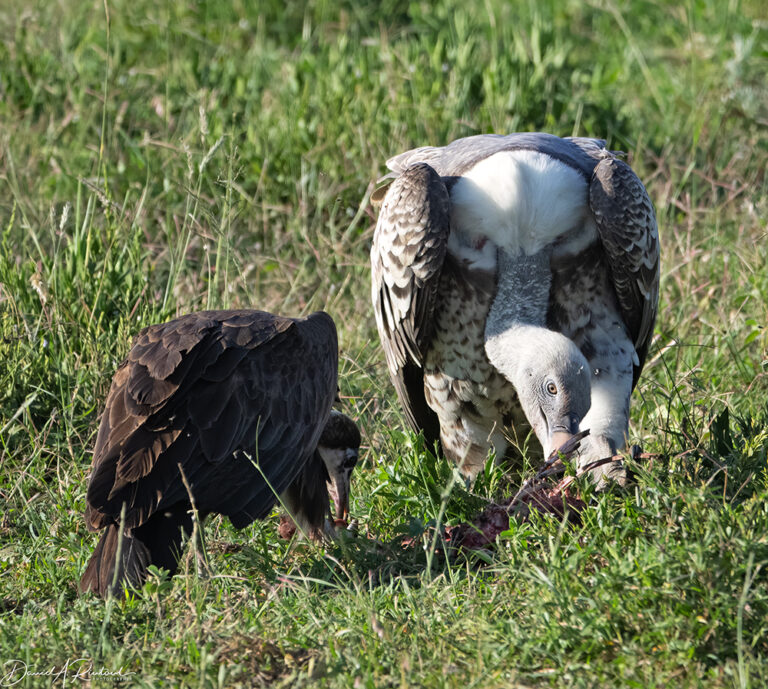
Although you might think that this is another image of a parent and youngster, it is actually a Hooded Vulture (Necrosyrtes monachus) at left and the much more robust Ruppell’s Vulture (aka Ruppell’s Griffon, Gyps rueppellii), feeding on leftover wildebeest. The latter is credited with being the world’s highest-flying bird, based on a collision between one of these birds and an aircraft at an altitude of 37.000 ft. Not much oxygen up there… Click here for larger image.
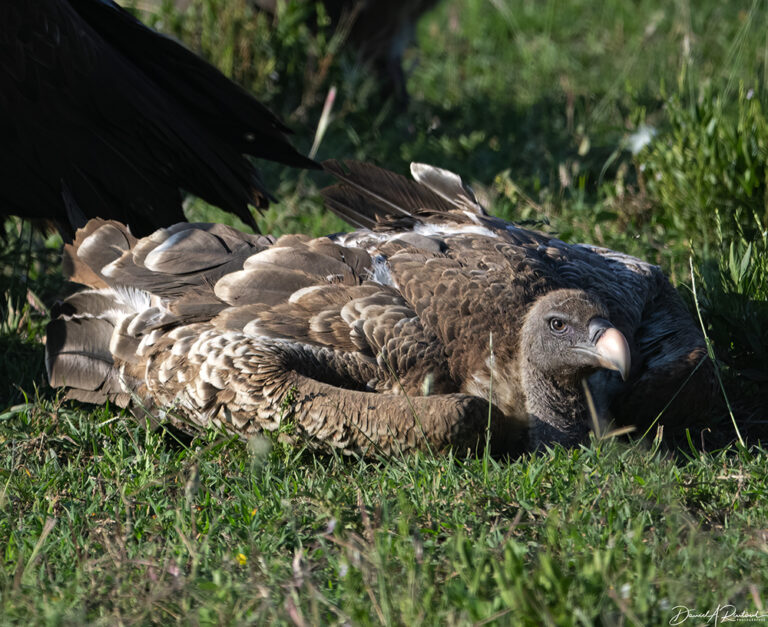
This Ruppell’s Vulture, on the other hand, is probably too full to get to 37,000 feet altitude anytime soon. Click here for larger image.
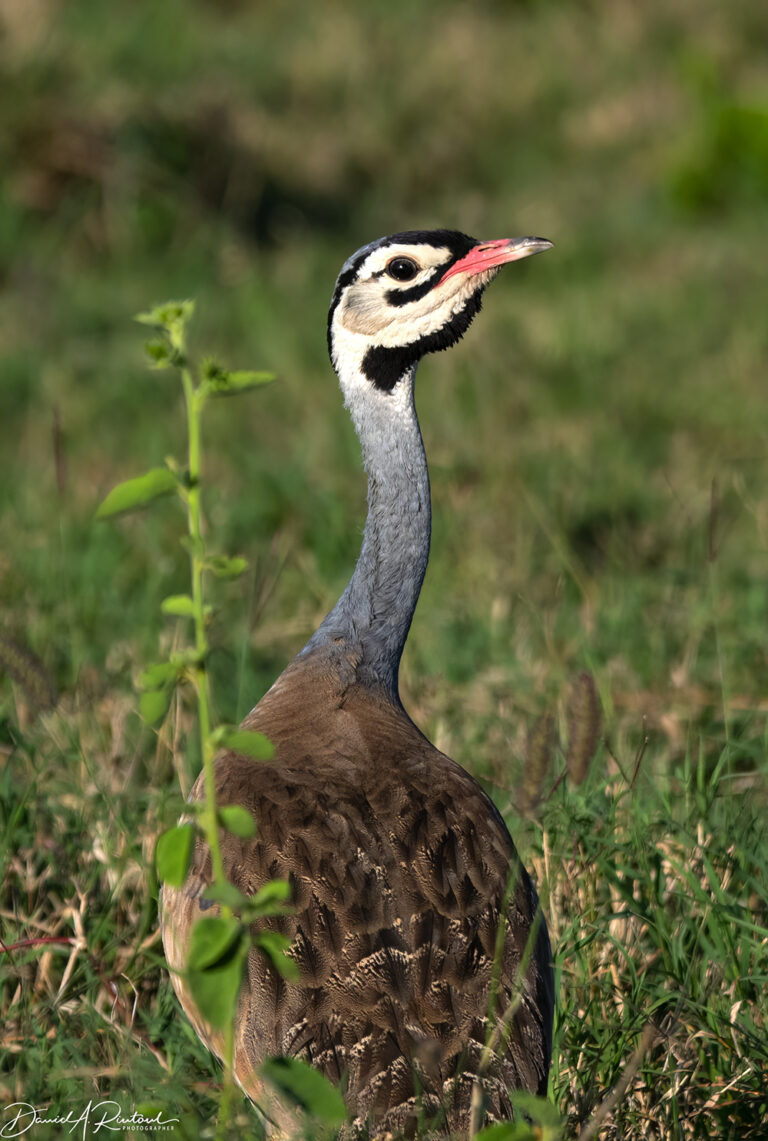
This elegant bird is a male White-bellied Bustard (Eupodotis senegalensis). We know it is a male because of that gray-blue neck, which would be buff-colored if this was a female bird. I was thrilled to see this one, as our guide told us that they were usually only heard and not often seen well. It would have been fun to hear it too; the calls are pretty funky! But the sighting was pretty special. Click here for larger image.
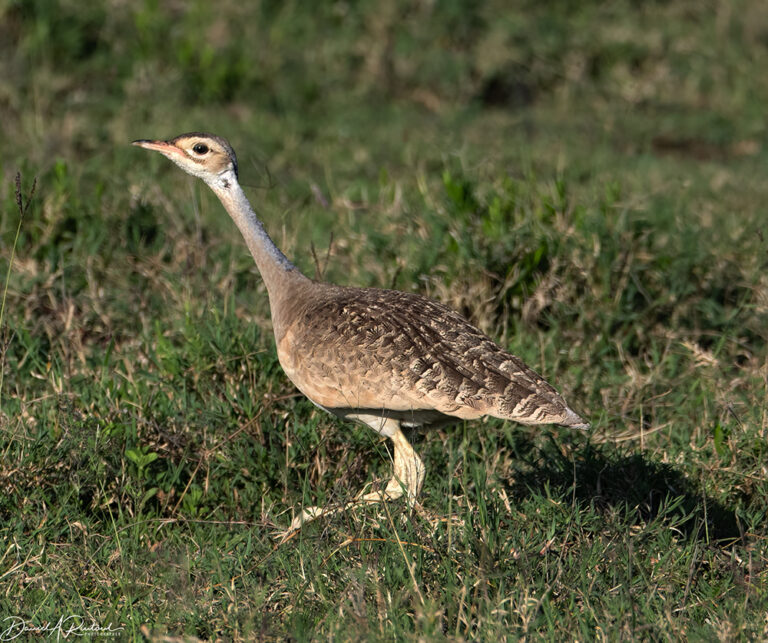
The male bustard in the previous image was in the company of this one, which appears to be a youngster based on head coloration and the plumage on the back. And it probably is the offspring of that adult male. According to The Birds of the World monograph for this species: “Young remain with the adults for long periods post-fledging”, but I could not find out how long those long periods might be. Click here for larger image.
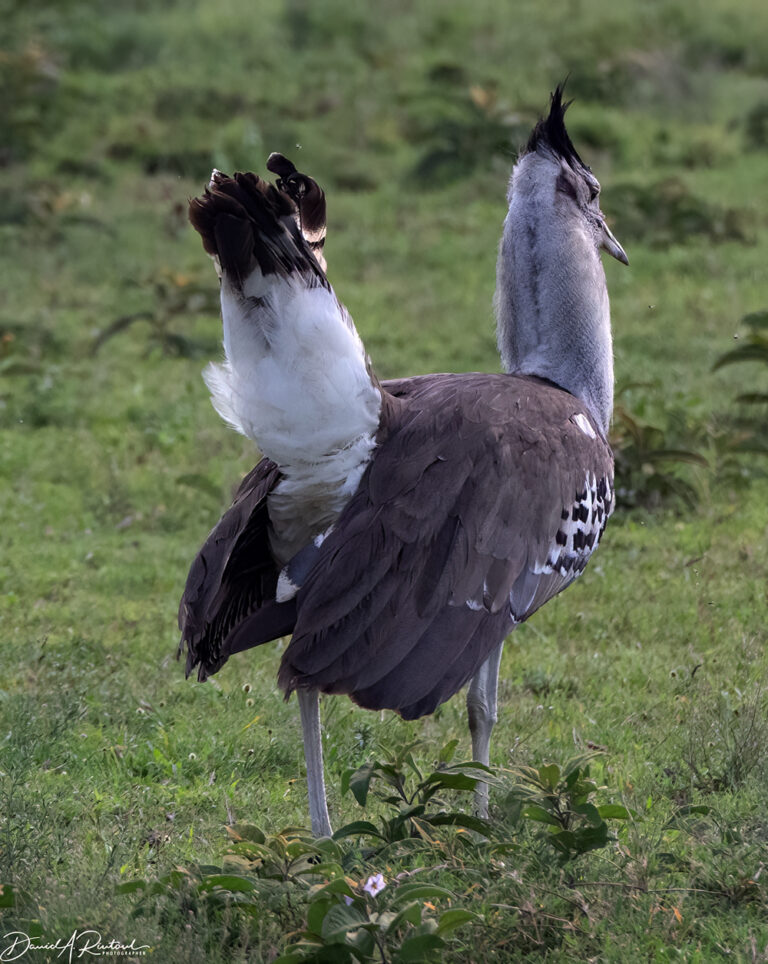
Another bustard that we commonly saw was the Kori Bustard (Ardeotis kori), a large and impressive bird for sure. This one was courting, and we certainly we very much impressed! And I have no video of this, unfortunately; I guess I was too enthralled with this spectacle. Online I was able to find one video of this behavior, from Ngorongoro Crater, but it does not have the sounds, which were also impressive! Click here for larger image.
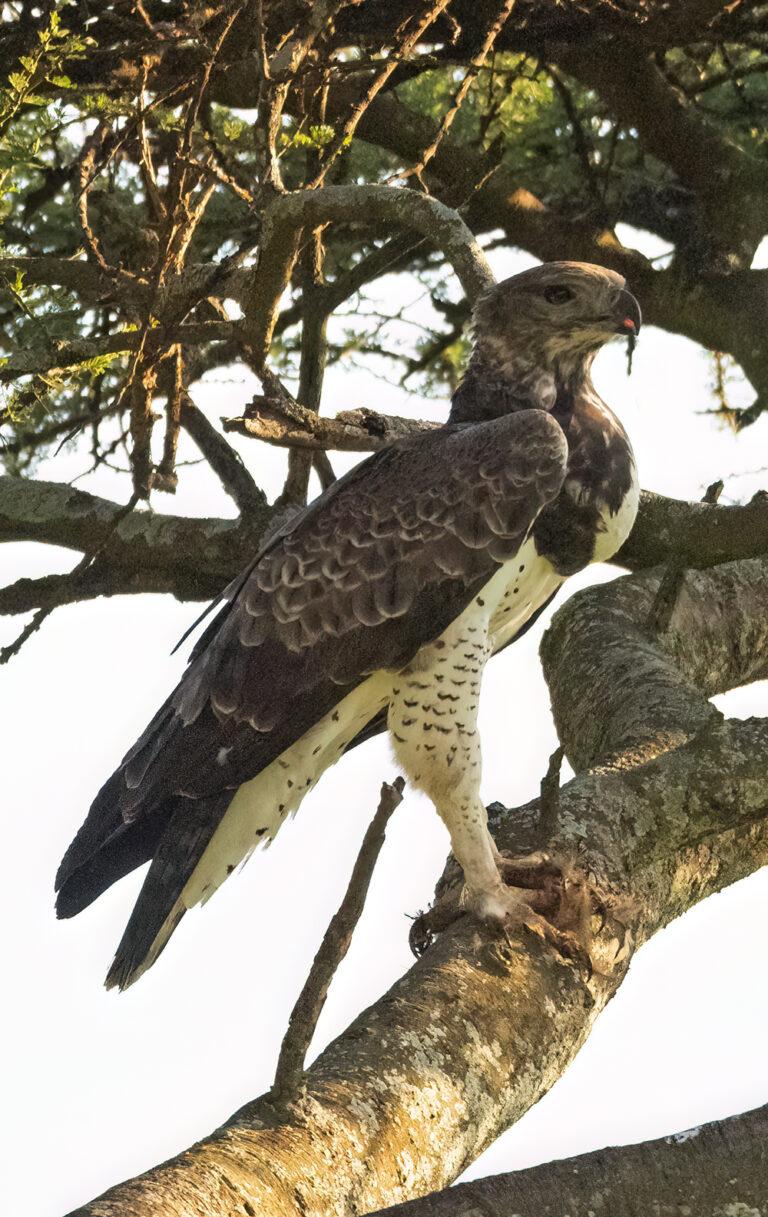
The final bird of this batch was also a bucket-lister, seen in the waning light of early evening. It’s a Martial Eagle (Polemaetus bellicosus), one of the two largest eagles in Africa. We did see the other large eagle, the Crowned Eagle (Stephanoaetus coronatus), but it was at a distance much too great for getting a decent picture. Judging from the bulging crop on this bird, it has had a successful hunting day. Click here for larger image.

eclare
That baby elephant is too cute!
Chris T.
@eclare: Baby Elephant Walk (youtube, Henry Mancini)
eclare
@Chris T.:
I can picture it to that song!
JPL
The photos of the bustards are amazing. Thanks for sending them in.
J.
Great photos!
WaterGirl
If it’s Sunday, It’s Meet the Press.If it’s Monday, it’s … birds and baby elephants!
Rachel Bakes
Loving these pictures!
showing my ignorance, I smile with every photo of a bustard you include. Until these I only knew bustards from Dr Seuss books and figured they were fictional to rhyme with mustard. Shows what I know
lashonharangue
Great photos! The Serengeti is an amazing place.
SteveinPHX
The Martial Eagle certainly looks like a “no nonsense” bird. Thank you!
WeimarGerman
Very nice photos!
Would you mind sharing a note about your equipment? Are you getting these images with a 400mm lens? Assuming you are using a full frame camera and tightly cropping too.
Albatrossity
@WeimarGerman: I’ve shared that information in comments here previously, but rather than dig around for that, I can tell you that these were all taken with an Olympus mirrorless body (E-M1, Mark II), which is a half-sensor camera in the Micro Four Thirds family. The lens was a Panasonic/Leica 100-400mm zoom, which on that body becomes a 200-800 mm zoom. And yes, many of these images are also heavily cropped!